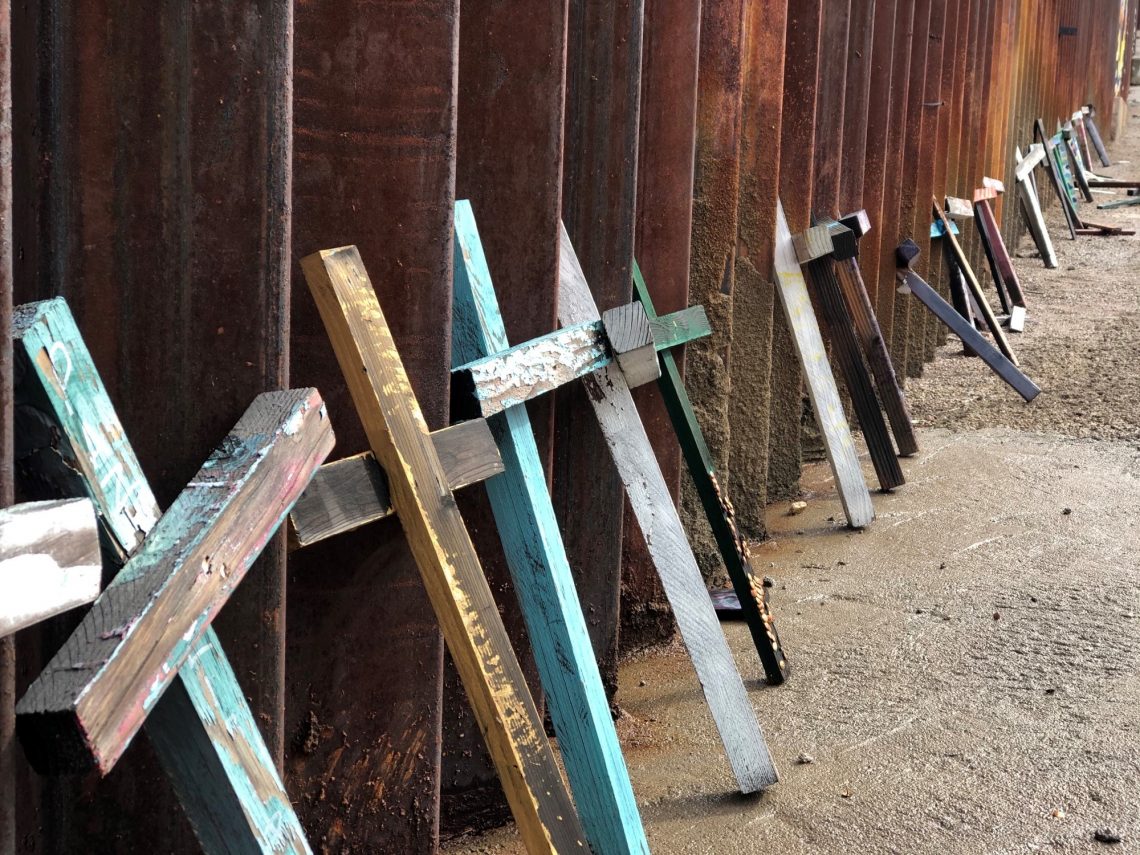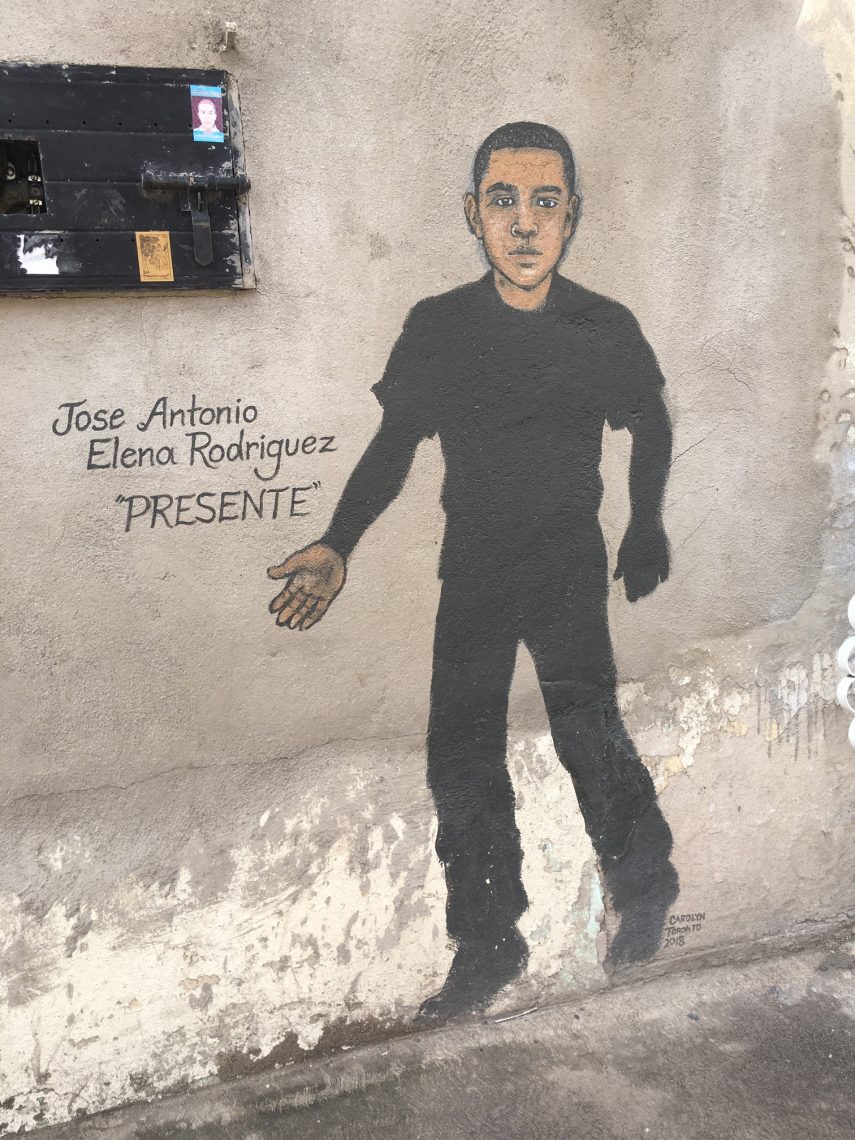
By Aidan Hall & David Vargas Puga
Our first view of Nogales, Senora set a tone that would stick with us for the rest of our excursion. The U.S-Mexico border cuts straight through this community, and measures have been taken to ensure that loved ones stranded on opposite sides cannot even hold hands across this line. The level of militarization of this border resembles that of places like the “demilitarized zone” that divides North and South Korea, who have technically been at war with each other for the past 65 years, but unlike these two nations, the U.S and Mexico ostensibly have a symbiotic
and friendly relationship.
The war comparison unfortunately starts to make more sense when discussing the fate of José Antonio, the 16 year old Mexican boy shot 10 times in the back and killed by a U.S Border Patrol officer on the Mexican side of the border in 2012. The involved officer alleged that he felt threatened by the rocks Antonio was throwing at him, though despite the immense level of U.S surveillance of the area in question, no video footage was ever provided that could verify this claim. Other murders have occurred in the past few years following this exact pattern, and no Border Patrol officer has yet faced justice for their crimes. To be effective at achieving the goal of “American security,” the border wall needs protection: razor wire, security cameras, and guards with guns who have the willingness to use them at the slightest provocation. In Nogales, Sonora, the border is not just a wall or a barrier, but a threat, a loaded gun aimed at every Mexican citizen in sight, and the U.S doesn’t want to see any sudden movements.
On the other side of the border, and the other side of this issue, is the desperation faced by people like Daniel (name changed in respect for his privacy). As he tells it, he was forced to leave southern Mexico, from his home in Michoacán after the passage of NAFTA in 1994, which devastated the Mexican agricultural economy. Mexican farmers could not compete with the heavily subsidized American agricultural products flowing across the border after the establishment of continent-wide “free trade,” and as a result many thousands of workers were forced to seek employment elsewhere. Many of these migrants, like Daniel, decided to set their
sights on the United States. Unfortunately, U.S officials seem to have foreseen this situation, or at the very least, were ready to respond to it. The U.S Border Patrol introduced a new strategic plan in 1994, which attempted to reroute migrant traffic from the safe ports of entry in cities like Nogales to the more harsh and uninhabited desert regions of the border. The militarization and securitization of safe ports of entry would be accelerated sharply, and the border would be left less fortified elsewhere in order to bring this about. This plan of “Prevention Through Deterrence” had the express goal of endangering the lives of migrants coming from Mexico and
in doing so discourage them from making the journey, and for this reason, Daniel promised himself that though he yearned for the opportunity that the U.S had to offer, he would never attempt to cross anywhere but a safe port of entry.
Of course, as everyone knows, many migrants still do attempt this desert border crossing, and this speaks to the stark absence of economic opportunity throughout the country. As we learned, though there is much work to be done in Nogales, working at the various American-owned factories there, the workers are compensated very little for their labor. For
example, in order to have the money needed to purchase a single pound of pork, a factory laborer earning the minimum wage of 19 pesos per hour would need to spend more than nine hours doing brutal factory work. An American in Portland, Oregon would spend less than 30 minutes working to earn enough to purchase this pork at their local supermarket. The standard minimum for the workweek of a Nogales factory worker is roughly 48 hours, and the pay from this work schedule leaves few able to afford the basic necessities of life, forcing them to take on more and more shifts. We, as privileged college students, on the immersion trip, were delighted by how low the prices were at the supermarket we visited, but for the average resident of Nogales such a trip is an excruciating exercise in budgeting. Many ordinary people work upwards of 60 hours per week, and still must worry about whether they have enough to make it to the next pay day.
This kind of life of constant, back-breaking labor and economic anxiety seems rightfully horrifying to us American students, but for many of those trying to get by in Mexico, this state of affairs represents the standard “middle class” experience.
Fear and desperation were the most prominent themes of the day, and I don’t think that any of us on this trip will ever be able to forget it.
